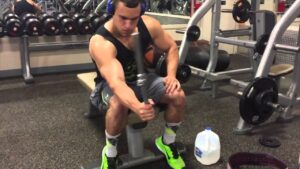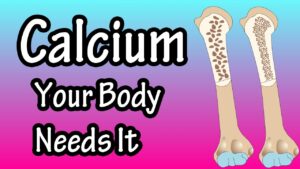✪✪✪✪✪ http://www.theaudiopedia.com ✪✪✪✪✪ What is BODY MASS INDEX? What does BODY MASS INDEX mean? BODY MASS INDEX meaning – BODY MASS INDEX definition – BODY MASS INDEX explanation. Source: Wikipedia.org article, adapted under https://creativecommons.org/licenses/by-sa/3.0/ license. The body mass index (BMI) or Quetelet index is a value derived from the mass (weight) and height of an individual. The BMI is defined as the body mass divided by the square of the body height, and is universally expressed in units of kg/m2, resulting from mass in kilograms and height in metres. The BMI may also be determined using a table or chart which displays BMI as a function of mass and height using contour lines or colours for different BMI categories, and which may use other units of measurement (converted to metric units for the calculation). The BMI is an attempt to quantify the amount of tissue mass (muscle, fat, and bone) in an individual, and then categorize that person as underweight, normal weight, overweight, or obese based on that value. However, there is some debate about where on the BMI scale the dividing lines between categories should be placed. Commonly accepted BMI ranges are underweight: under 18.5 kg/m2, normal weight: 18.5 to 25, overweight: 25 to 30, obese: over 30. People of Asian descent have different associations between BMI, percentage of body fat, and health risks than those of European descent, with a higher risk of type 2 diabetes and cardiovascular disease at BMIs lower than the WHO cut-off point for overweight, 25 kg/m2, although the cutoff for observed risk varies among different Asian populations. BMI is proportional to the mass and inversely proportional to the square of the height. So, if all body dimensions double, and mass scales naturally with the cube of the height, then BMI doubles instead of remaining the same. This results in taller people having a reported BMI that is uncharacteristically high, compared to their actual body fat levels. In comparison, the Ponderal index is based on the natural scaling of mass with the third power of the height. However, many taller people are not just “scaled up” short people but tend to have narrower frames in proportion to their height. Nick Korevaar (a mathematics lecturer from the University of Utah) suggests that instead of squaring the body height (as the BMI does) or cubing the body height (as the Ponderal index does), it would be more appropriate to use an exponent of between 2.3 and 2.7 (as originally noted by Quetelet). (For a theoretical basis for such values see MacKay.) Carl Lavie has written that, “The B.M.I. tables are excellent for identifying obesity and body fat in large populations, but they are far less reliable for determining fatness in individuals.” A frequent use of the BMI is to assess how much an individual’s body weight departs from what is normal or desirable for a person’s height. The weight excess or deficiency may, in part, be accounted for by body fat (adipose tissue) although other factors such as muscularity also affect BMI significantly (see discussion below and overweight). The WHO regards a BMI of less than 18.5 as underweight and may indicate malnutrition, an eating disorder, or other health problems, while a BMI equal to or greater than 25 is considered overweight and above 30 is considered obese. These ranges of BMI values are valid only as statistical categories.

What is BODY MASS INDEX? What does BODY MASS INDEX mean? BODY MASS INDEX meaning
- Post author:
- Post published:June 13, 2021
- Post comments:0 Comments
You Might Also Like

Health Benefits of Fish Oil Omega-3 Fatty Acids | GuruMann

Telmisartan information burst

7 Day Lean – The Program, The Story, The Results w/ Kettlebell Kickboxing & Dasha Libin Anderson

Develop Bigger & More Vascular Forearms | Best Exercises

Male Hormones

Pre/During/Post Workout Drink || SHREDDED NEXT LEVEL by Guru Mann ||

What are the Alternatives to Xenical Weight Loss Pills

Nutritional Requirements during Pregnancy

Organic Foods Video – 2

Best 5 Must have Supplements for Gym goers from chemist under 600 | Best Multivitamins

Liver Damage – 11 Warning Signs

Trampoline Video – 4

What is IUI treatment for Pregnancy

Barbell Incline Bench Press – HASfit Upper Chest Exercise Demonstration – Incline Press – Pectoral

INSULIN For Bodybuilding |Muscle Building Messenger

Calcium – How Much Calcium Does The Body Need – Why Does The Body Need Calcium

Low Pulley Biceps Curl

HAMMER CURLS- 5 DIFFERENT TYPES- Rich Piana

Results of Incline bench DAILY!

Health Check: Thyroid Test

Dr. Oz: Fat and Body Types

Surgery Books Video – 1

How To: Bench Dip
Strength

What Is The Best Type Of Drinking Water? – Dr. Doug Graham

ANATOMY & PHYSIOLOGY: DEFINITIONS

Football Psychology Video – 2

Muscle Building Workout & Squats Video – 40

5 Diet Tips to Lose Belly Fat 87% Faster!

how to check random blood glucose- glucometer

Master the Chest Fly Press – Best Chest Training – BPI Sports

iAPPS Health Group Doctor – Insuline & Glucagon

Addiction Psychiatry Video – 2

Leptin, Adiponectin ,resistin(-adipocyte hormones)

Soccer/ Football Video – 3

Andrology Video – 6
![Read more about the article TRIGGER YOUR FAT BURNING AND HUNGER CRUSHING HORMONE: GLUCAGON [2 SIMPLE WAYS] | LiveLeanTV](https://videos.drmaheshkumar.com/wp-content/uploads/2021/05/TRIGGER-YOUR-FAT-BURNING-AND-HUNGER-CRUSHING-HORMONE-GLUCAGON-2-SIMPLE-WAYS-LiveLeanTV-300x225.jpg)
TRIGGER YOUR FAT BURNING AND HUNGER CRUSHING HORMONE: GLUCAGON [2 SIMPLE WAYS] | LiveLeanTV

How much protein do we need every day | daily protein requirement | Hindi | Fitness Rockers

First Line of Treatment for BP? NCLEX Style Question

Insulin Action Times
Latissimus Dorsi Bent Over Row-10

